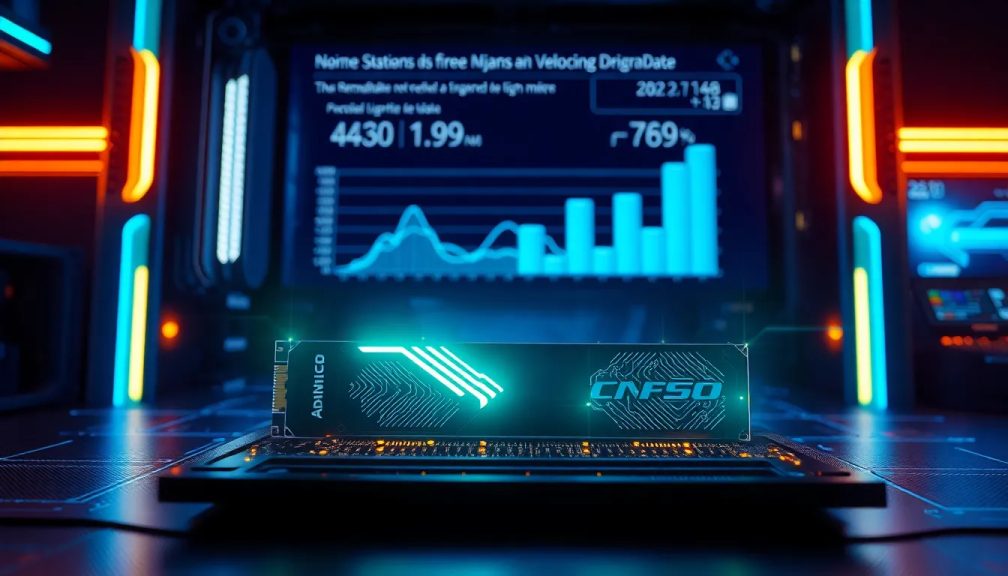How NVMe 2.0 SSDs Can Boost Your Performance

As technology continues to evolve, the demand for faster and more efficient data storage solutions has never been greater. For gamers, professionals, and tech enthusiasts, the choice of storage can significantly affect overall system performance. In this landscape, NVMe 2.0 SSDs are making waves, promising to revolutionize storage capabilities. Let’s delve deeper into the advantages of NVMe 2.0 and its impact on performance.
Advantages of NVMe 2.0
The transition to NVMe 2.0 doesn’t introduce any new physical formats or connectors, which means these SSDs are designed to fit seamlessly into existing systems with PCIe 5 M.2 slots. This compatibility is crucial for users looking to upgrade without overhauling their hardware.
One of the standout features of NVMe 2.0 is its implementation of zoned namespaces. This innovation allows the drive and operating system to optimize data placement within memory cells, resulting in enhanced performance and better utilization of available capacity. Additionally, NVMe 2.0 introduces key value commands that streamline the process of data retrieval, reducing the workload on the controller and improving overall efficiency.
Combined with a sophisticated 6nm controller architecture, NVMe 2.0 SSDs can support multiple flash memory channels simultaneously, enhancing both read and write speeds. For example, the Biwin Black Opal X570 Pro SSD boasts impressive specifications, including:
- Read speeds of up to 14,000 MBps
- Write speeds reaching 13,000 MBps
- Random read performance of up to 2000K IOPS
Such specifications make NVMe 2.0 SSDs an attractive option for high-demand applications, especially in gaming and content creation, where speed is critical.
Does NVMe really increase performance?
When considering the upgrade from older storage technologies to NVMe 2.0, many users ask if they will notice a significant performance increase. The answer is a resounding yes.
NVMe 2.0 drives, like the Biwin Black Opal X570 Pro, showcase substantial improvements in performance metrics, which can be illustrated by comparing them to their predecessors:
| Storage Type | Read Speed (MBps) | Write Speed (MBps) |
|---|---|---|
| SATA SSD | 600 | 500 |
| PCIe 3.0 SSD | 3,500 | 3,000 |
| NVMe 2.0 SSD | 14,000 | 13,000 |
These figures highlight the dramatic leap in performance, especially in data-intensive scenarios. Tasks such as loading games, transferring large files, or running virtual machines can benefit tremendously from NVMe 2.0 technology.
Is NVMe faster than SSD?
The term "SSD" encompasses various technologies, including SATA SSDs, PCIe 3.0 SSDs, and NVMe SSDs. Among these, NVMe drives are the clear winners in terms of speed and efficiency.
To better understand the differences, consider the following:
- SATA SSDs are limited by the SATA interface, which caps their speeds around 600 MBps.
- PCIe 3.0 SSDs can reach speeds of approximately 3,500 MBps, but still fall short of the latest NVMe offerings.
- NVMe SSDs leverage PCIe lanes to deliver speeds that can exceed 14,000 MBps with NVMe 2.0.
For users looking for the fastest and most robust storage solutions, NVMe 2.0 is the clear choice, offering speeds that can drastically improve computing performance.
Which NVMe models to avoid?
As with any technology, not all NVMe SSDs are created equal. When selecting an NVMe SSD, it's essential to consider several factors to avoid subpar options:
- Check for the latest version: Ensure the SSD supports NVMe 2.0 to benefit from the latest advancements.
- Avoid drives with limited warranty: A shorter warranty may indicate lower durability or quality.
- Look for reputable brands: Stick with established manufacturers known for quality and reliability.
By being diligent in your research, you can avoid investing in an NVMe SSD that may not deliver the performance you expect.
Is it worth replacing SSD with NVMe?
For users considering the transition from a standard SSD to an NVMe drive, the question arises: is it worth the investment?
The answer largely depends on your usage scenario:
- Gaming: If you play the latest titles, an NVMe drive can significantly reduce loading times and improve performance.
- Content creation: For video editing, 3D rendering, and similar tasks, the speed of NVMe can drastically enhance workflow efficiency.
- General productivity: Everyday tasks may see marginal improvements, but the benefits are most pronounced in data-intensive applications.
Ultimately, if your work or gaming demands high performance, upgrading to an NVMe SSD can be a game changer.
Future outlook for NVMe technology
As we look towards the future, the adoption of NVMe technology is expected to grow, especially with advancements in PCIe 5.0 and beyond. The continuous innovation in this sector promises even faster speeds, improved efficiency, and greater capacities.
For enthusiasts and professionals alike, staying informed about the latest developments in NVMe technology will be crucial to making informed decisions about storage solutions. As gaming and applications become more demanding, the need for high-performing SSDs will only become more prominent.
To further explore the benefits of NVMe SSDs, check out this informative video:




Leave a Reply